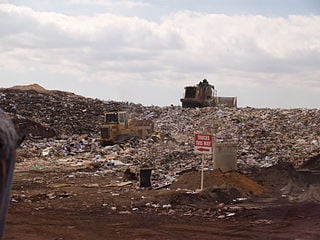Municipal Solid Waste (MSW) is big business. But being big business doesn’t necessarily ensure profitability. The recycling industry as a whole, meanwhile, after holding its own for several decades at least, today the outlook, truth be told, appears less rosy. Whether recyclable or non-recyclable material like MSW, finding alternative uses for such refuse can not only take some of the pressure off of recycling and landfill operations alike, but can contribute toward environmental protection at the same time.

And one way to do this is to redirect certain MSW types normally destined to landfill sites to wastewater treatment facilities where it can be converted to a feedstock for power generation.
Generating power via wastewater-treatment-plant processing? Yup, you heard right!
Co-digestion
“Waste can be ‘co-digested’ at these facilities, which involves adding organic wastes including municipal food scraps and industrial food processing wastes such as chicken blood to a facility’s anaerobic digester,” the California Environmental Protection Agency (CalEPA) in an Aug. 24, 2020 press release notes.
This was one of the findings of a report the CalEPA issued that same day which also showed that no less than “half of California’s landfill-bound food waste could be processed at the state’s wastewater treatment plants and serve as an innovative power source.”
Exciting news! “‘The report’s findings are very promising,’ said State Water Board Chair E. Joaquin Esquivel. ‘It shows California’s wastewater treatment plants have the existing anaerobic digestion capacity to accommodate at least half of California’s landfilled food waste—likely more. We look forward to working with our industry partners to get more of these projects off the ground.’”
CalEPA went on in the release to state, “Building on a survey of the nearly 225 wastewater treatment plants in California, the report finds that many have the existing anaerobic digestion capacity to accommodate diverted food waste. While maximizing the use of that excess capacity would require additional infrastructure investments, the report shows such investments would benefit California’s economy while advancing environmental goals.”
To the uninitiated this all may sound radical. To those in the know, revolutionary would be more like it.
Co-benefits
“Maximizing co-digestion capacity could reduce statewide greenhouse gas emissions by as much as 2.4 million metric tons of CO2-equivalent per year,” the CalEPA insists. “That’s more than half of the emissions from landfills that California committed to reducing by 2030.”
But, it goes beyond this. The practice itself could, also according to the same state agency, turn a profit.
“The report estimates the statewide capital investments required to use the co-digestion capacity range between $900 million and $1.4 billion. The net benefits to the state could be up to $255 million each year,” adds the CalEPA.
Meanwhile, more from the press release and more about the report can be found here and here, respectively.
Not included in the release, however, was explanation of how exactly food waste deemed acceptable would be brought to the respective wastewater treatment facilities.
Image above: Ashley Felton
Published by Alan Kandel
